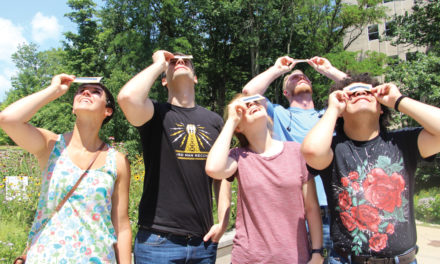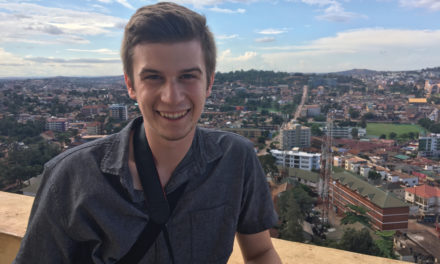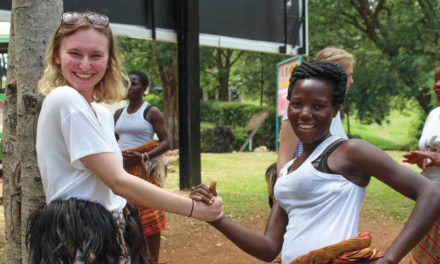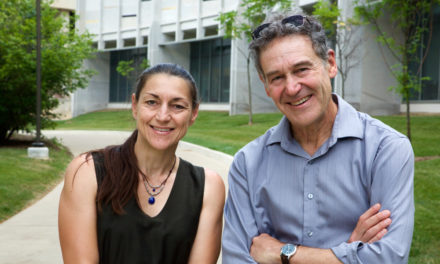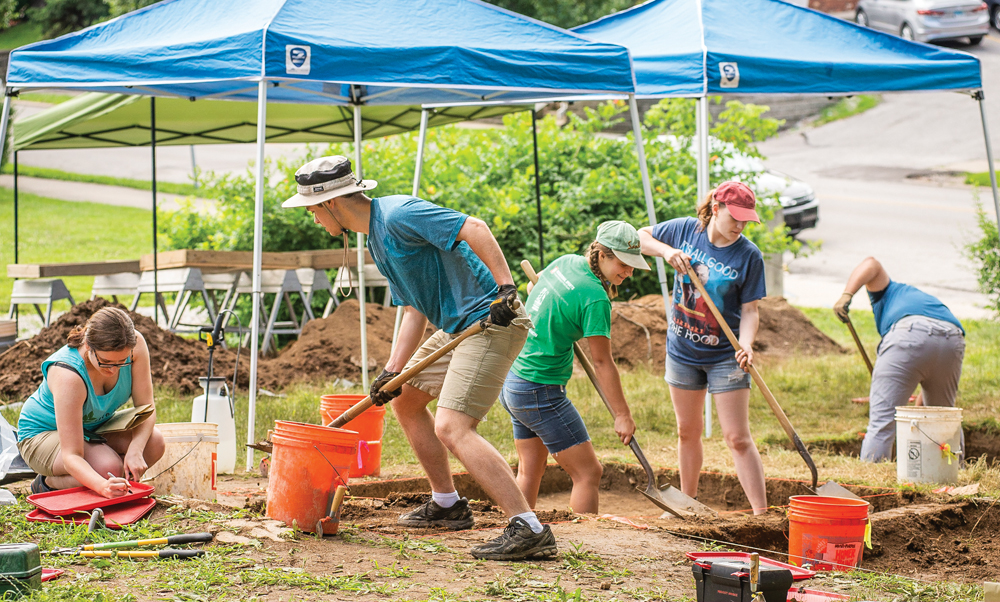
The dig at the Wylie House Museum. Photos by Rodney Margison
BY SUSAN M. BRACKNEY
Even before I joined the dig at the Wylie House Museum, I knew my concept of archaeology—mostly dinosaurs, mummies, and Indiana Jones—was tragically oversimplified. Still, I didn’t know how oversimplified until I started working alongside some real archaeologists uncovering circa-1859 greenhouses. The museum, 307 E. 2nd St., opened the dig to the public in June with a series of Community Volunteer Days. “It started with a grant through the Indiana University Office of the Bicentennial,” Wylie House Museum Director Carey Beam explains.
Wylie House partnered with IU’s Glenn A. Black Laboratory of Archaeology for the project. Librarians, archivists, and archaeologists analyzed letters referencing the greenhouses as well as a “memory map” created by a Wylie relative. “The family called the greenhouses ‘pits,’” Beam says. “Because they were written about pretty often and they were in the front yard in an area that had been undisturbed, they were good candidates.”
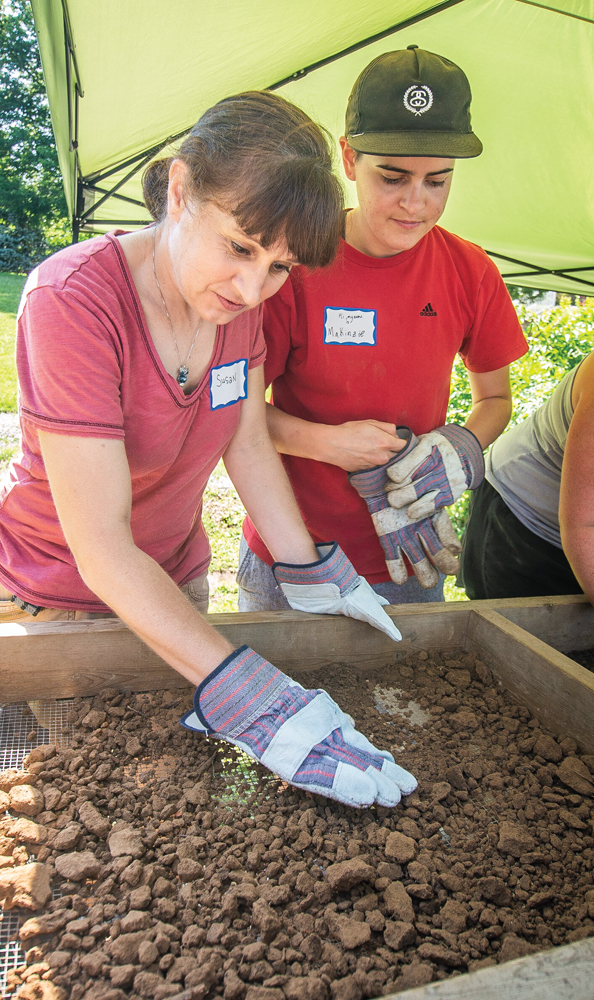
The dig at the Wylie House Museum; (left) writer Susan M. Brackney looks for artifacts along with recent IU graduate MaKinzie Hoagland. Photos by Rodney Margison
The team overlaid satellite imagery onto the memory map and, in March, Indiana Geological and Water Survey Director Todd Thompson used ground-penetrating radar to highlight underground anomalies. “Certain artifacts and archeological features can reflect an electromagnetic wave back up to the machine,” Elizabeth Watts Malouchos, a Glenn A. Black Laboratory of Archaeology associate research scientist, says. “Anytime you get a result in remote sensing that’s square, rectangular, linear, or maybe circular, those could indicate archaeological features that are pre-contact or historic.”
A rectangular signature appeared, and, in June, IU archaeology students began excavating—10 painstaking centimeters at a time, sifting everything through quarter-inch screening. “That’s pretty standard in archaeology,” Malouchos says. “But also, because of the work of IU Archaeologist Cheryl Munson, Indiana has some of the best archaeology laws in the country.”
To date, students have found broken serving dishes, several buttons, glass, and even a small, metal horse. If they encounter bone, they must take care not to damage it, and it must be separated from other artifacts.
“The students are learning basic skills and methodologies, like how to lay out these square units and how to map elevation,” Malouchos notes. “They can go anywhere in the world, work at any site of any time period, and apply these same skills as they move forward in their careers.”


